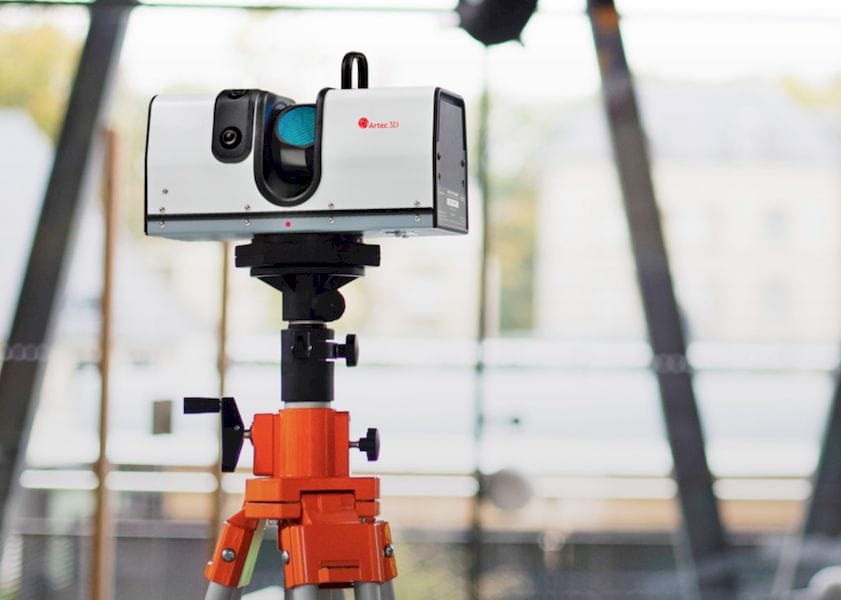
Artec annuounced a different kind of 3D scanner, the Artec Ray.
You might think that a 3D scanner is a 3D scanner, but in fact there are several different types and processes, all best for different practical situations. One dimension is the type of object, as some 3D scanning processes don’t work with certain materials. Another dimension is the accuracy required. Another is speed of capture, as some targets are in motion and instant scanning is required. Another is color, where surface texturing must be captured.
And perhaps the biggest dimension is size of the subject. Many 3D scanners are limited in the size of object they can capture, and this is particularly true of tabletop devices where the subject must fit within a small volume. Typically such machines are used to scan small items with very high precision.
At the other end of the scale are very large objects, like buildings. That’s what the Artec Ray is all about.
The tripod-mounted device is able to scan enormous volumes with its huge 110m scan range. With this capability you can easily capture large vehicles or aircraft, entire buildings, or even landscapes.
Astonishingly, Artec claims a ranging error of only 0.7mm – at 15m range. Users can get an extremely accurate scan of a very large object or structure by moving the Artec Ray around the subject at that range. At the full 110m range of the Artec Ray, this corresponds to a ranging error of only a little over 5mm, which is quite accurate considering the size of the structures being scanned. This is an interesting option if a scan needs to be captured in less time.
How does the device accomplish this? The underlying technology is very different from Artec’s previous equipment, which uses the structured light process. Instead, the Artec Ray uses a LIDAR engine.
LIDAR, for those unfamiliar, is a scanning technology very similar to radar, but instead uses pulsed light beams. It’s a technology that’s also being used for autonomous vehicle sensors. Here its used to create a 3D point cloud of large, typically outdoor subjects.
This large scale ability can be, in theory, even larger by joining multiple scans together in CAD afterwards. Imagine the ability to capture detailed 3D models of entire city blocks, all down to 5mm accuracy!
But at a smaller – but still large – scale, this capability can be of great use to industry. There are plenty of examples of larger objects that may, for example, require re-engineering.
Consider a scenario where a 40 year old ship requires a new propeller to replace one of three. The ship’s design files may be long gone, and a replacement may require re-engineering the lost design. With a large-scale 3D scanner, you could capture the precise shape of a surviving propeller and use that 3D design to re-create a replacement, perhaps using 3D printing to avoid the need for complex custom molding.
Not every company would require such technology, but some certainly will. The Artec Ray 3D scanner is available now at a cost of USD$60,000.
Via Artec

